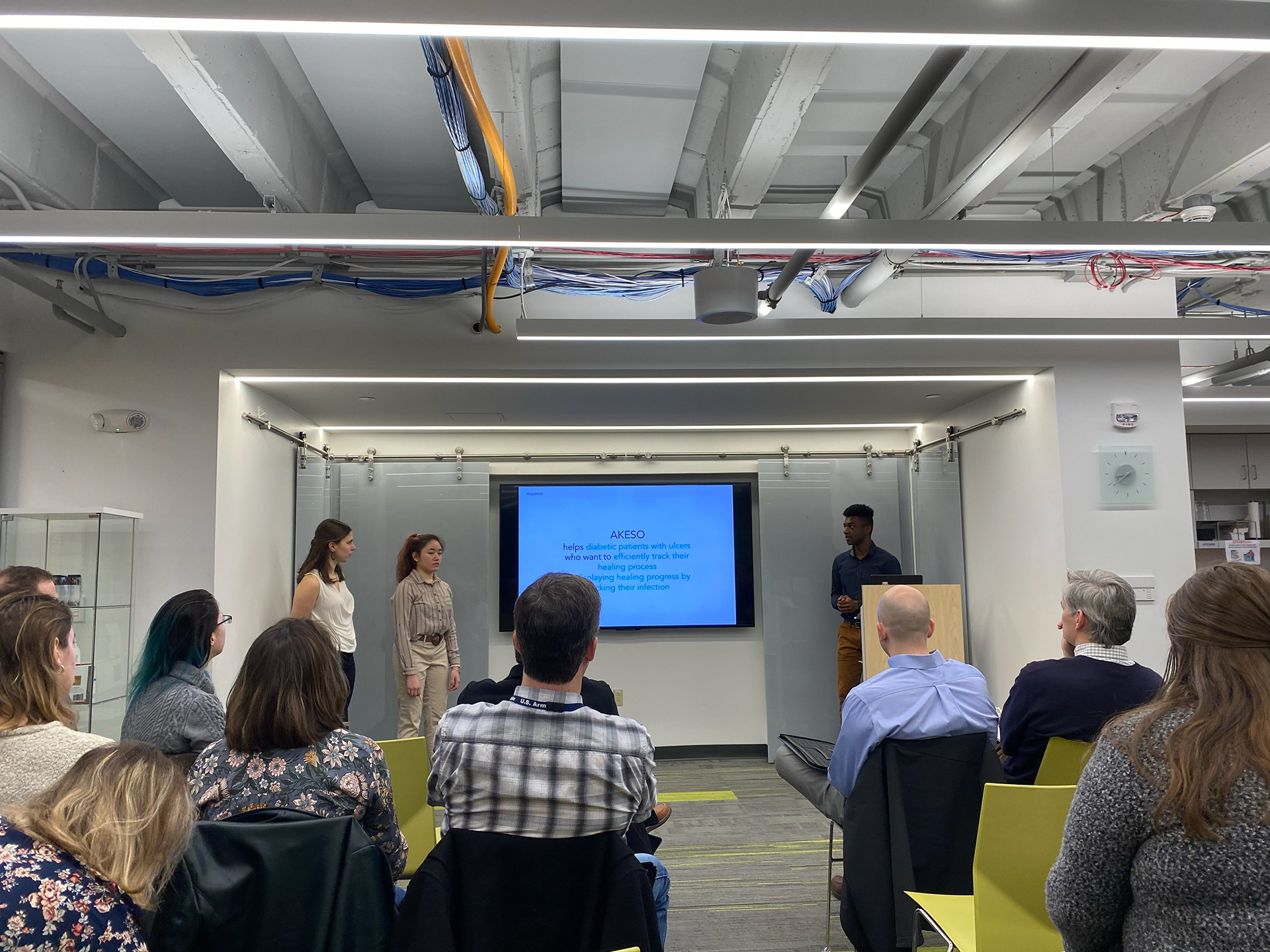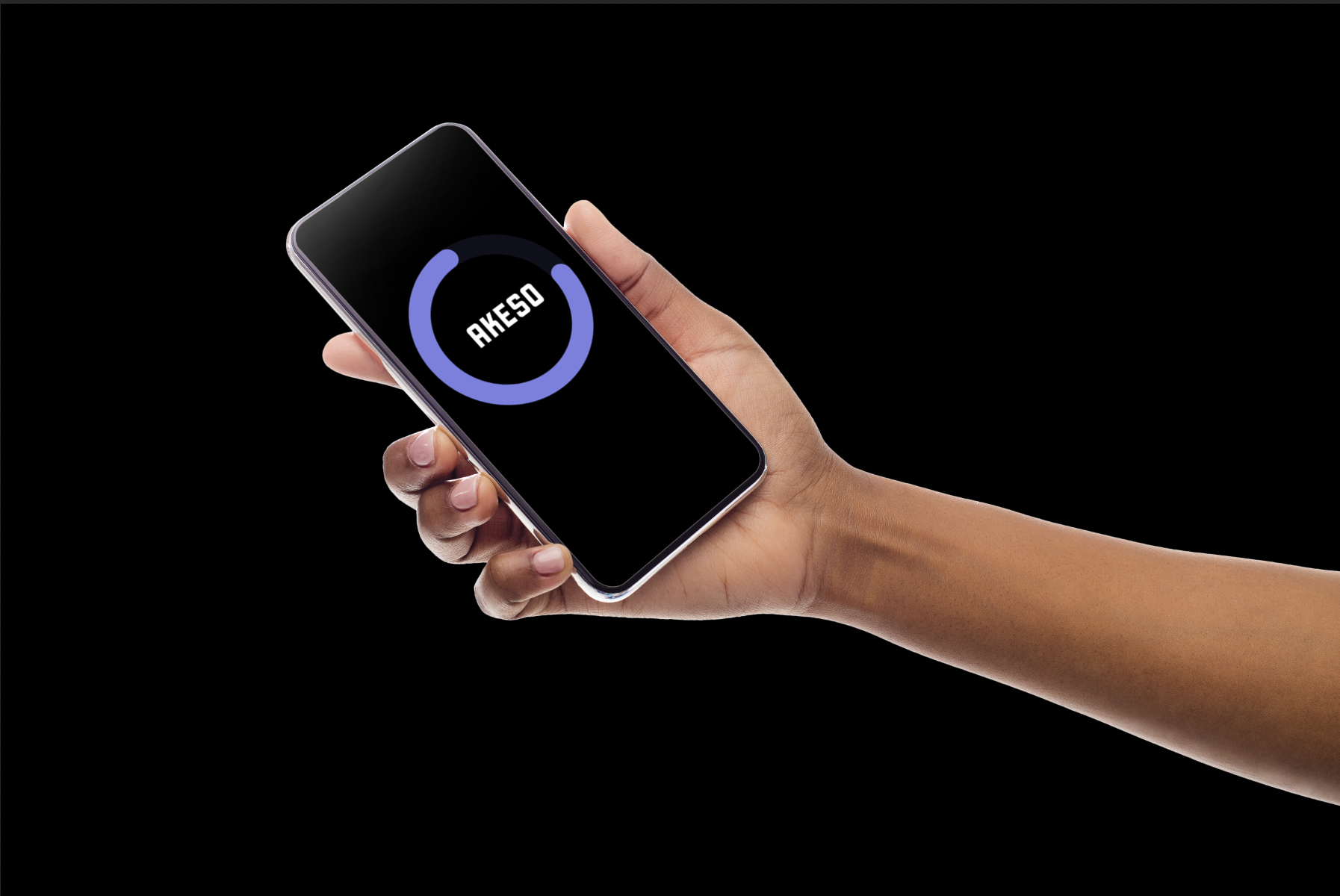AKESO
Healthcare / UX Design / App Design / Human Centered Design / Design Research / Branding / Social Impact
ROLE: Visual Designer, UX Researcher, UX Designer
COMPLETED: Fall 2019
COLLABORATED WITH: Ashley Lin and Nick Blake
SPECIAL THANKS TO: Cigna Health, Express Scripts, Capacity AI, and Enrique Von Rohr for all of their feedback and guidance throughout this project.
COMPLETED: Fall 2019
COLLABORATED WITH: Ashley Lin and Nick Blake
SPECIAL THANKS TO: Cigna Health, Express Scripts, Capacity AI, and Enrique Von Rohr for all of their feedback and guidance throughout this project.
PROBLEM
My team decided to scope down and focus on diabetes, and in particular diabetic foot ulcers. A diabetic foot ulcer is an open sore or wound that occurs in approximately 15 percent of patients with diabetes and is commonly located on the bottom of the foot. If the ulcer does not heal, an amputation may be required.
25% of patients with diabetes who develop a foot ulcer will require an amputation. 82,000 amputations are performed every year on diabetic patients due to ulceration and infection. Foot ulceration precedes 85% of diabetic related ulcerations. Two-thirds of medication-related hospital admissions are due to non-adherence, costing our healthcare system approximately $100 billion a year.
Initial How Might We: HMW create wearable technology that helps consumers manage their health adherence over time?
HMW after scoping: HMW help those with diabetic ulcers track and maintain the healing of their ulcers?
SOLUTION
AKESO includes both a “smart sock” and an app that addresses the issue of amputation resulting from prolonged infection of diabetic ulcers. The “Smart Sock” is worn comfortably around the foot and keeps diabetic patients informed about the healing progress of their ulcers by tracking pH, temperature, and diameter using recently developed microtechnology. This information is linked to the application and helps the patient, physician, and caretaker track the healing of the wound.
My team decided to scope down and focus on diabetes, and in particular diabetic foot ulcers. A diabetic foot ulcer is an open sore or wound that occurs in approximately 15 percent of patients with diabetes and is commonly located on the bottom of the foot. If the ulcer does not heal, an amputation may be required.
25% of patients with diabetes who develop a foot ulcer will require an amputation. 82,000 amputations are performed every year on diabetic patients due to ulceration and infection. Foot ulceration precedes 85% of diabetic related ulcerations. Two-thirds of medication-related hospital admissions are due to non-adherence, costing our healthcare system approximately $100 billion a year.
Initial How Might We: HMW create wearable technology that helps consumers manage their health adherence over time?
HMW after scoping: HMW help those with diabetic ulcers track and maintain the healing of their ulcers?
SOLUTION
AKESO includes both a “smart sock” and an app that addresses the issue of amputation resulting from prolonged infection of diabetic ulcers. The “Smart Sock” is worn comfortably around the foot and keeps diabetic patients informed about the healing progress of their ulcers by tracking pH, temperature, and diameter using recently developed microtechnology. This information is linked to the application and helps the patient, physician, and caretaker track the healing of the wound.


FEASIBILITY
In 2018, a team of researchers from Tufts University, Harvard Medical School, and Purdue University created a prototype for a “Smart Bandage.” One feature of the bandage’s technology is that it uses flexible electronics and is embedded with pH and temperature sensors that monitor the wearer’s wound in real time. AKESO applies this new technology.
In 2018, a team of researchers from Tufts University, Harvard Medical School, and Purdue University created a prototype for a “Smart Bandage.” One feature of the bandage’s technology is that it uses flexible electronics and is embedded with pH and temperature sensors that monitor the wearer’s wound in real time. AKESO applies this new technology.

PROCESS/RESEARCH
We started the project with doing research on diabetes, the tools that exist to treat it, and by conducting interviews with doctors, nurses, caretakers, and others affected by diabetes. We conducted 8 qualitative guided interviews that were 1 hour each. After conducting interviews we created User Personas and starting gathering and synthesizing our observations.
We started the project with doing research on diabetes, the tools that exist to treat it, and by conducting interviews with doctors, nurses, caretakers, and others affected by diabetes. We conducted 8 qualitative guided interviews that were 1 hour each. After conducting interviews we created User Personas and starting gathering and synthesizing our observations.


We then created journey maps, and narrowed in on our HMW to make it more specific. Then, we did a "Crazy 8" sprint—that I learned at a prototyping workshop with UX designers and researches from Google. It is an idea generating activity in which you have 4 minutes to generate 8 ideas. From doing this exercise, we narrowed in on our concept from taking aspects from all of our different ideas.

Then, we created a site architecture for our app and sketched the initial idea.

Our initial sketch of the product:

Initial wireframes for the app:


TEAM
Nick Blake, Ashley Lin and I. And a big thank you to Express Scripts, Cigna, Capacity, and Enrique Von Rohr, for their generous feedback throughout the process.
Nick Blake, Ashley Lin and I. And a big thank you to Express Scripts, Cigna, Capacity, and Enrique Von Rohr, for their generous feedback throughout the process.


NEXT STEPS:
I look forward to conducting more interviews and refining the product. We will conduct interviews to gain insights on usability and effectivness of the app & sock.
I look forward to conducting more interviews and refining the product. We will conduct interviews to gain insights on usability and effectivness of the app & sock.
